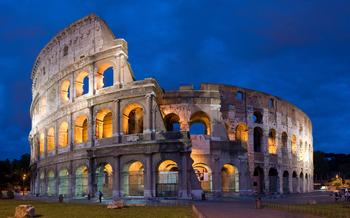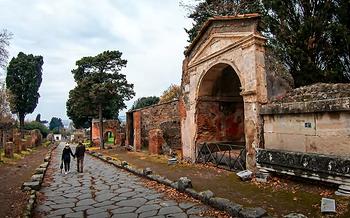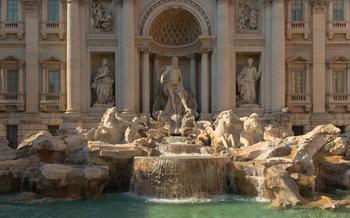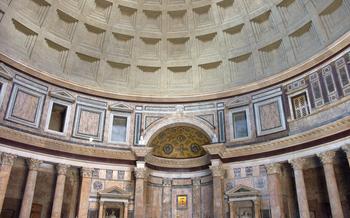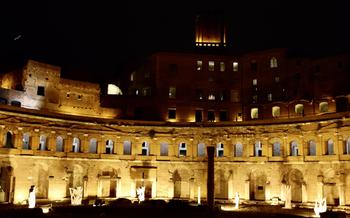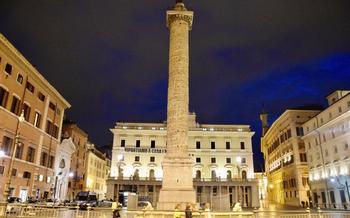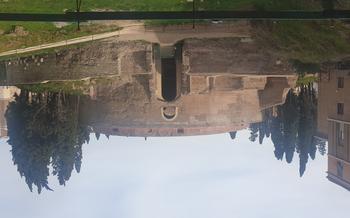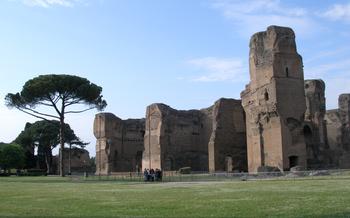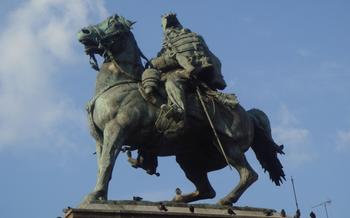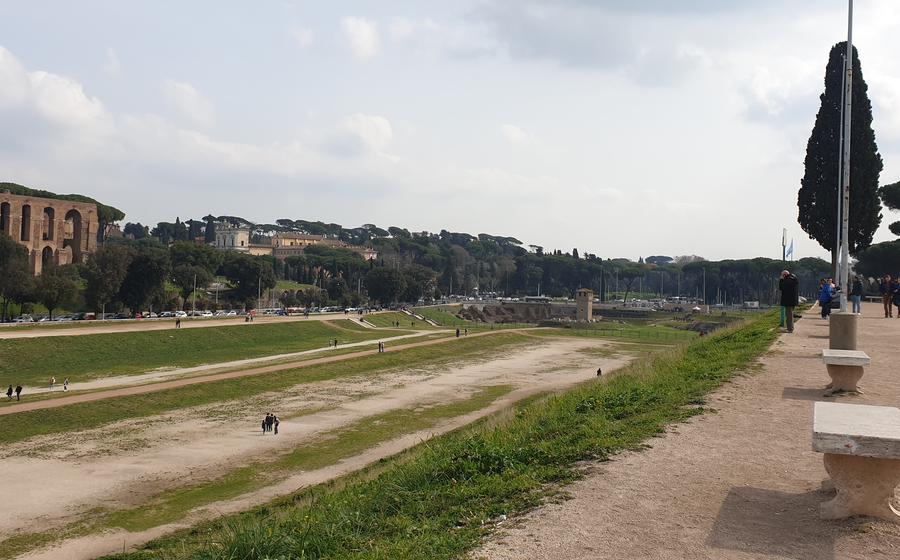
Circus Maximus
- Introduction
- Location
- History and Construction
- Chariot Races
- Gladiatorial Contests
- Abandonment and Decay
- Archaeological Excavations
- Current State and Restoration
- Visiting the Circus Maximus
- Virtual Reality Experience
- Nearby Attractions
- Tips for Visitors
- Insider Tip: Unveiling a Hidden Gem
Introduction
The Circus Maximus, an ancient chariot racing stadium and a place of popular entertainment in ancient Rome, is a testament to the grandeur and spectacle of the Roman Empire. With a history dating back to 6th century BC, the Circus Maximus served as the heart of sporting and cultural events in Rome for over a thousand years. It was the largest stadium of its kind in the ancient world, capable of accommodating hundreds of thousands of spectators eager to witness exhilarating chariot races, gladiatorial contests, and diverse spectacles that defined Roman culture and entertainment.
Location
The Circus Maximus is situated in the heart of Rome, in the rione of Ripa, between the Aventine and Palatine hills. It is easily accessible by public transportation, with several bus lines stopping nearby. Visitors can also take a taxi or ride-sharing service to the site.
The Circus Maximus is surrounded by several notable landmarks, making it an ideal starting point for a day of exploration. The Colosseum, one of the most iconic symbols of ancient Rome, is just a short walk away. Also nearby are the Baths of Caracalla, the largest and best-preserved ancient Roman bath complex.
For those interested in exploring the historic center of Rome, the Circus Maximus is a convenient starting point. The Pantheon, the Trevi Fountain, and the Spanish Steps are all within walking distance.
History and Construction
The Circus Maximus, with its origins dating back to the 6th century BCE, underwent significant transformations throughout ancient Rome's history. Initially, it was a simple track used for chariot races, but over time, it evolved into an elaborate and impressive structure. The Circus Maximus was renowned for its immense size, capable of accommodating over 150,000 spectators. Its unique design featured a central track, known as the spina, flanked by seating tiers that rose steeply on either side. The spina was decorated with statues, obelisks, and other adornments, adding to the grandeur of the venue. The Circus Maximus also incorporated innovative features such as starting gates, which ensured a fair start for the chariot races, and a complex water system that helped control dust and maintain the track's condition.
Chariot Races
Chariot races were an integral part of ancient Roman culture and held immense popularity among the citizens. These races were not merely sporting events but also spectacles of skill, strategy, and excitement. TheCircus Maximus hosted some of the most renowned chariot races, attracting massive crowds eager to witness the thrilling competitions.
The races typically featured two-horse chariots, known as bigae, or four-horse chariots, called quadrigas, driven by skilled charioteers. Each charioteer represented a specific faction, distinguished by their colors and symbols. The most prominent factions in ancient Rome were the Blues, Greens, Reds, and Whites, each with their dedicated supporters.
To ensure fairness and order, strict rules governed the races. The starting line was marked by a chalk line, and a white cloth was dropped as the signal for the start. The charioteers raced around the track seven times, navigating sharp turns and attempting to overtake their opponents without causing collisions. Penalties were imposed for infractions, such as fouls or causing accidents, which could lead to disqualification or even physical punishment.
The races were not just about speed but also strategy. Charioteers employed various tactics to gain an advantage, such as cutting off opponents, blocking their path, or using the whip to gain momentum. The crowd roared with excitement as the chariots sped around the track, their cheers and jeers influencing the outcome of the races.
Chariot races held significant cultural and political importance in ancient Rome. They were not only a form of entertainment but also a means to showcase wealth, power, and influence. Factions often had wealthy patrons who supported their teams, and victories were celebrated with lavish banquets and parades. The races also served as a venue for political maneuvering, as factions sometimes aligned themselves with powerful figures to gain favor and influence.
The popularity of chariot races extended beyond Rome, and they became a significant cultural phenomenon throughout the Roman Empire. They left a lasting legacy in art, literature, and mythology, inspiring countless stories and depictions of the excitement, danger, and glory of these ancient sporting events.
Gladiatorial Contests
Gladiatorial contests originated in ancient Rome as a form of public entertainment, evolving from Etruscan funeral games held to honor the deceased. Over time, they became an integral part of Roman culture, serving various purposes. Initially, gladiatorial contests held religious significance, as they were believed to appease the gods and bring good fortune. However, as the Roman Empire expanded and conquered new territories, gladiatorial contests increasingly became a means of showcasing Roman power and military prowess.
History
The first recorded gladiatorial contest in Rome took place in 264 BC during the funeral games for a Roman nobleman. These early contests were relatively simple affairs, with only a few gladiators fighting each other. However, as the popularity of gladiatorial contests grew, they became more elaborate and organized. By the 1st century BC, gladiatorial contests were held regularly in purpose-built arenas, such as the Colosseum, and could involve hundreds of gladiators fighting in battles that lasted for days.
Types of Gladiators
There were different types of gladiators, each with distinct fighting styles and weapons. The most common type was the retiarius, armed with a net and a trident. Other types included the secutor, equipped with a sword and a shield; the thraex, who fought with a curved sword and a small shield; and the murmillo, who wore a fish-shaped helmet and used a long sword. The gladiators were often trained slaves or criminals, but some were also free men who chose to fight for fame and fortune.
Popularity and Decadence
Gladiatorial contests were immensely popular in ancient Rome. They attracted vast crowds of spectators from all walks of life, who cheered on their favorite gladiators and wagered on the outcome of the fights. The contests were often brutal and bloody, with many gladiators killed or seriously injured. However, the Romans seemed to have a taste for violence and gore, and the gladiatorial contests became a symbol of Roman decadence and excess.
Abandonment and Decay
After the fall of the Roman Empire, the once-glorious Circus Maximus fell into a state of decline and neglect. As the empire crumbled and resources dwindled, the upkeep and maintenance of the vast structure became a burden. The once-vibrant arena, where thousands of spectators had witnessed thrilling chariot races and gladiatorial contests, slowly began to deteriorate.
Over the centuries, the Circus Maximus suffered from a combination of neglect and vandalism. The marble seats were stripped away and repurposed for other construction projects, leaving behind only remnants of their former grandeur. The track itself became overgrown with weeds and vegetation, obscuring its once-precise layout. The surrounding structures, once adorned with intricate sculptures and frescoes, were left to crumble and decay.
As Rome transformed over time, the Circus Maximus became a mere shadow of its former self. It was used sporadically for various purposes, such as a market or a venue for public executions, but it never regained its original glory. The once-resounding cheers of the crowd were replaced by the silence of abandonment, and the Circus Maximus became a haunting reminder of the transience of power and the inevitable passage of time.
Archaeological Excavations
Rediscovering the grandeur of the Circus Maximus began in the 19th century, when archaeological excavations unearthed the buried remains of this ancient stadium. These excavations revealed the foundations of the seating tiers, the spina (central barrier), and the track, providing valuable insights into the design and layout of the Circus Maximus.
Archaeological research continues to shed light on the history and significance of this iconic venue. Ongoing excavations have uncovered artifacts, such as pottery fragments, coins, and inscriptions, that help archaeologists piece together the story of the Circus Maximus. These discoveries contribute to a deeper understanding of the daily life and entertainment in ancient Rome.
The Circus Maximus Archaeological Park, established in 2016, encompasses the excavated area and aims to preserve and enhance this historical site. The park's ongoing research and restoration efforts ensure that future generations can appreciate and learn from the legacy of the Circus Maximus.
Current State and Restoration
In recent years, the Circus Maximus has undergone extensive restoration efforts aimed at preserving its historical integrity while making it accessible to visitors. The restoration process involved meticulous excavation, structural reinforcement, and the reconstruction of seating tiers using original materials whenever possible. These efforts have helped to revitalize the site and showcase its grandeur, providing visitors with a tangible connection to ancient Rome.
The establishment of the Circus Maximus Archaeological Park in 2016 marked a significant milestone in the preservation and enhancement of the site. The park encompasses the entire area of the Circus Maximus, including the surrounding gardens and archaeological remains. It offers visitors a unique opportunity to explore the history of the site, learn about its significance, and appreciate its architectural features. The park also features interactive exhibits, educational panels, and guided tours that provide visitors with a deeper understanding of the Circus Maximus and its role in ancient Roman society.
Visiting the Circus Maximus
The Circus Maximus is a significant historical site and a popular tourist destination in Rome. It is accessible to visitors throughout the year, offering an immersive and educational experience. Opening hours vary depending on the season, typically from early morning until sunset. Admission is free, making it an excellent budget-friendly attraction.
Guided tours are available for those who want a more in-depth understanding of the Circus Maximus's history and significance. These tours typically cover the site's highlights, including the starting gates, the spina, and the seating tiers. Guided tours provide valuable insights and historical context, enhancing the overall visitor experience.
For those who prefer to explore at their own pace, self-guided tours are also an option. Visitors can wander around the Circus Maximus, taking in its vast size and imagining the excitement of the ancient chariot races. Information panels and signs are placed throughout the site, offering historical context and explanations.
Virtual Reality Experience
In addition to exploring the physical remains of the Circus Maximus, visitors can also immerse themselves in its history and atmosphere through a state-of-the-art virtual reality experience. This cutting-edge technology transports visitors back in time, allowing them to witness chariot races and gladiatorial contests as if they were actually there.
By donning a virtual reality headset, visitors can experience the thrill of the races, the roar of the crowd, and the excitement of the gladiatorial arena. The immersive experience brings the ancient world to life, offering a unique and unforgettable way to learn about the history and culture of ancient Rome.
Through the virtual reality experience, visitors can explore the Circus Maximus during its heyday, when it was the center of entertainment and spectacle in ancient Rome. They can witness the grandeur of the chariot races, the skill and daring of the gladiators, and the vibrant atmosphere of the crowds. It's a unique way to step into the past and experience the Circus Maximus as it once was.
Nearby Attractions
Situated in the heart of ancient Rome, the Circus Maximus is surrounded by a plethora of iconic landmarks that transport visitors back in time. A short walk to the west lies Palatine Hill, one of Rome's legendary Seven Hills and the birthplace of the city. With its panoramic views, lush gardens, and well-preserved ruins, Palatine Hill offers a glimpse into the grandeur and opulence of ancient Roman life.
In close proximity to the Circus Maximus, the mighty Colosseum stands as a testament to Rome's engineering prowess and the brutal spectacle of gladiatorial contests. Visitors can explore the Colosseum's underground chambers, where gladiators prepared for battle, and marvel at its towering structure that once accommodated tens of thousands of spectators. The Circus Maximus and the Colosseum are inextricably linked, representing two sides of the same coin: the thrills of chariot races and the bloodthirsty nature of gladiatorial combat.
Tips for Visitors
-
Comfortable Footwear: Navigating the Circus Maximus involves traversing uneven terrain and covering a considerable distance on foot. To ensure a comfortable and enjoyable visit, it is advisable to wear sturdy and comfortable footwear with good support. This will help prevent discomfort or injuries from walking on uneven surfaces.
-
Sun Protection: The Circus Maximus offers limited shade, particularly during the summer months when the sun's intensity can be overwhelming. Visitors are strongly advised to come prepared with adequate sun protection measures. This includes wearing sunscreen with a high SPF, sunglasses, and a hat to shield themselves from the sun's harmful rays.
Insider Tip: Unveiling a Hidden Gem
For those seeking an exclusive experience, venture off the beaten path to discover a hidden gem within the Circus Maximus. Nestled amidst the ruins, you'll find a secluded spot that offers a breathtaking panorama of the ancient racetrack. From this vantage point, you can let your imagination soar as you envision the thunderous roar of the crowd and the fierce competition that once unfolded before you. This secret spot is the perfect place to soak in the grandeur of the Circus Maximus and transport yourself back in time to witness the spectacles that captivated ancient Rome.
